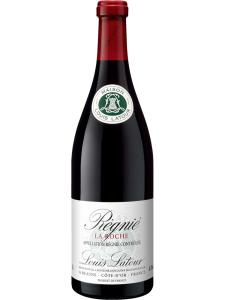Regnie is an appellation for red wines in northern Beaujolais, covering land immediately east of the village of Beaujeu. While the communes of Regnie-Durette and Lantignie were once only a part of the more-generic Beaujolais Villages appellation, years of lobbying by the region's growers saw the area confirmed in 1988 as the tenth Beaujolais cru. Regnie wines are some of the lightest of the Beaujolais crus, and are fragrant and structured, with refined tannins.
© Wikimedia/Rigolithe
The viticultural area of Regnie is the westernmost of the Beaujolais crus, and the vineyards can be found high on the east- and south-facing slopes of the Beaujolais hills, overlooking the Ardieres River in the south. The vineyards of Morgon are to the north-west of Regnie, and Brouilly can be found to the south.
The terroir of Regnie is distinguished by the pink granite soils found high in the Beaujolais hills. Here, at some of the highest altitudes in the region, vines are planted on coarse, sandy soils that are highly permeable and drain freely, an environment which is well suited to the Gamay grape variety. Further down the slopes, higher proportions of clay with better water-storage capabilities lead to a slightly more structured style of wine. The variation within the vineyard area allows growers to produce everything from fresh, light wines to heavier, more age-worthy examples of Regnie.
As in much of Beaujolais, the climate here is continental, although there are some influences from the Mediterranean in the south. A foehn wind that develops on the hills to the west of Beaujolais brings warm, dry air through the vineyards, keeping the canopy dry and preventing fungal vine diseases. High sunshine hours in the broad valley of the Saone River are moderated somewhat by cooling breezes from the south, allowing for the development of phenolic ripeness alongside acidity.
Winegrowing in Regnie dates back as much as 2000 years, and the region is supposedly named for a Gallo-Roman nobleman named Reginus who grew vines in the area. Viticulture has been practiced here ever since. Today, around 120 winegrowers are located in Regnie, many of whom practice organic growing methods.


